08-11-Daily AI News Daily
AI News Daily 2025/8/11
AI Insights | Daily Morning Read | Web Data Aggregation | Frontier Science Exploration | Industry Voice | Open-Source Innovation | AI & Human Future | Visit Web Version↗️
Today’s Rundown
ByteDance's Jiemeng AI platform just dropped a Creator Growth Plan to help creators actually make some bucks.
Meanwhile, cutting-edge research is blowing minds: tiny HRM models are showing off some serious reasoning chops, and diffusion language models are crushing it at data efficiency.
On the flip side, AI programming assistants are grappling with sky-high inference costs, hinting at a financial tightrope walk for their business models.
Product-wise, OpenAI has tweaked its model version display for clarity, and folks are really digging into open-source tools that prioritize privacy and local use.Product & Feature Updates
ByteDance’s Jiemeng AI platform is stepping up, ditching the “for love” model for AI creators! With a fully revamped Creator Growth Plan (AI News), they’re pledging to ensure talented folks like you aren’t fighting solo. This plan offers end-to-end support, from points rewards and traffic boosts to commercial gigs within the ByteDance ecosystem, all aimed at building a thriving environment where creativity actually pays off. The big game plan here is to replicate TikTok’s success, building a “promising” industry future with creators and evolving AI creation from a hobby into a mature industry.

OpenAI has finally heard the people! Tired of guessing which model powers your ChatGPT chats? Now, just hover your mouse over the “Regen” menu, and boom! You’ll instantly see the model version driving your creative genius. This sleek little update solves countless users’ “mystery game” woes, making model traceability simpler and more transparent than ever before. Go Check Out This New Feature (AI News) and bid farewell to the unsolved mystery of model identity!
Cutting-Edge Research
HRM (Hierarchical Reasoning Model) is shaking things up in the AI world! Wang Guan, the post-00s genius who reportedly turned down Elon Musk, is back to wow us with his tiny 27M model. This “little guy” has been outperforming much larger models like Claude 3.7 on tough tasks like extreme Sudoku and complex mazes, all without needing chain-of-thought prompting. Its secret sauce? A brain-inspired dual-loop module that cleverly separates high-level abstract planning from low-level detailed computation, pointing us towards a New Path Towards Efficient Inference (AI News).
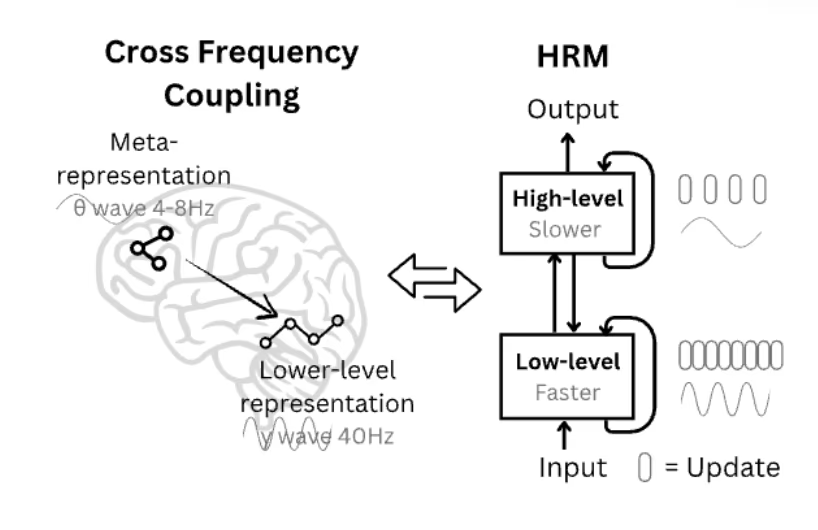
Diffusion Language Models (DLMs) might just be the answer to the AI world’s “token crisis”! A Groundbreaking Research (AI News Daily) from the National University of Singapore found that DLMs are absolute data-guzzlers, squeezing out over three times more data potential than traditional autoregressive models. The study even showed that DLM performance kept climbing even after “tormenting” the same dataset 480 times, proving their incredible learning power in data-limited scenarios. This not only offers fresh ideas for tackling the high-quality data drought but also totally flips our understanding of existing data’s true value.
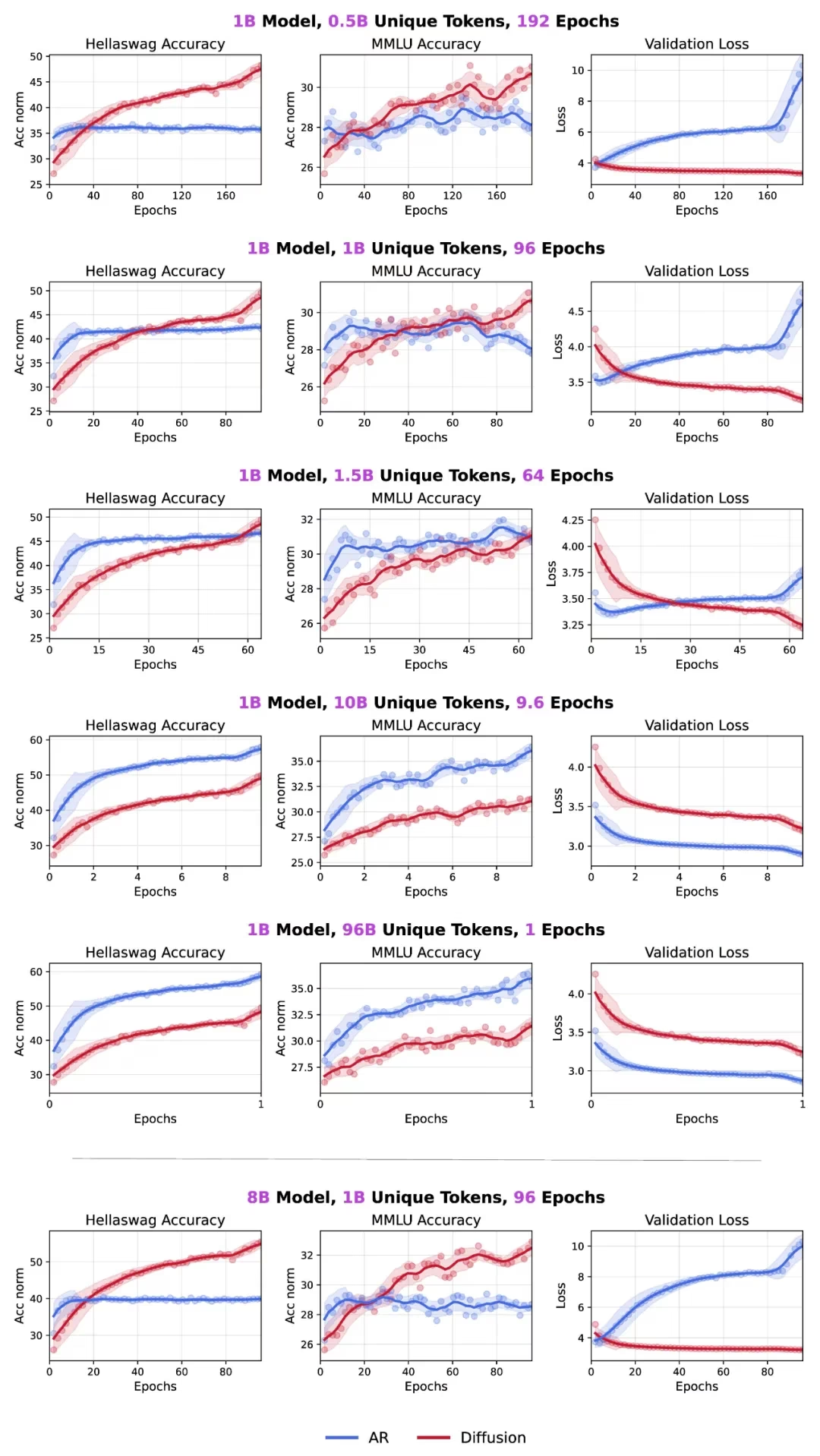
Industry Outlook & Social Impact
Dr. Zheng-You Zhang, Tencent’s Chief Scientist, just dropped some truth bombs: embodied AI isn’t just about sticking a brain on a robot. It’s gotta answer three real questions: “architecture, principles, and steadfastness.” He’s pushing for a SLAP³ layered architecture as a more practical path than end-to-end, especially with current data limitations. Think of it like building reusable rockets before heading to Mars — it lets us get started and gather valuable experience. Dr. Zhang stresses that the true first principle is achieving a “body-brain fusion” for native understanding. Plus, industry leaders need the grit to resist short-term commercial temptations to go the distance on the long road to AGI. This In-depth Interview (AI News) is definitely a must-read.

AI programming assistants you pay for monthly might be running a “VC charity show” – the more you use them, the more they lose! This In-depth Industry Analysis (AI News) pulls back the curtain on the “ticking time bomb” in AI coding tool business models: with negative gross margins, sky-high inference costs are far outstripping subscription fees, kept afloat only by VC funding. So, what’s the way forward? The answer points to a healthier ecosystem: model-agnosticism, transparent pricing, and embracing open-source, or this bubble’s gonna burst sooner or later.
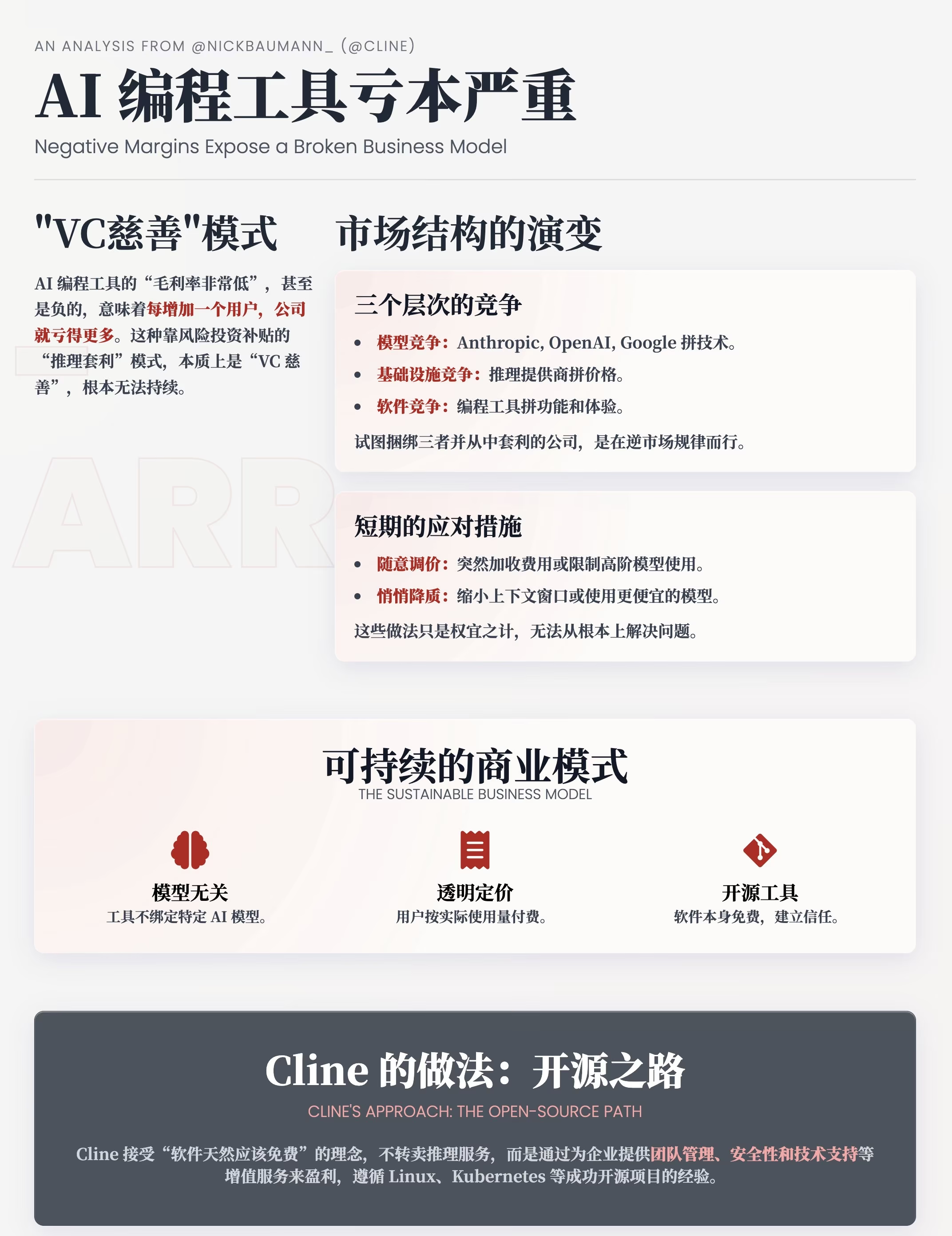
Top Open-Source Projects
Umami, the open-source project with ⭐28.2k stars on GitHub, is here to save the day! Still struggling with Google Analytics’ messy interface and privacy woes? It’s time for a new pick! Umami is a modern, minimalist, and super privacy-focused website analytics tool. It lets you easily track visitor data while keeping full control over your own data sovereignty—a total godsend for website owners. What are you waiting for? Give your site a fresh, secure new look!
Jan, the open-source powerhouse with a whopping ⭐35.8k stars on GitHub, is here to make your dreams come true! Want your own personal ChatGPT that works even when you’re offline? Stop fantasizing! Jan is a powerful open-source ChatGPT alternative that runs 100% offline on your computer, keeping your data secure and completely in your control. For privacy-conscious geeks who love local deployments, this is definitely the best buddy of the year.
Folo, the aggregated reading tool rocking ⭐30.9k stars on GitHub, is swooping in to save you from information overload and anxiety! In this info-explosion era, is your follow list scattered to the winds and totally unmanageable? Don’t sweat it! Folo aims to let you “follow everything in one place,” gobbling up blogs, news, social media—you name it. Come experience the thrill of controlling your information flow and bring order and calm back to your digital life!
Magisk is like a synonym for magic to Android tinkerers—it’s your “magic mask” for customizing your system however you please! This Legendary Project (AI News), boasting a massive ⭐55.1k stars on GitHub, gives you root access and endless possibilities with its powerful systemless modification capabilities, all without touching your system partition. If you’re itching to unleash your Android device’s full potential, Magisk is absolutely your go-to choice.
GitMCP, the free and open-source remote MCP server project, is the terminator for code hallucination—that persistent nightmare for developers! With ⭐4.3k stars on GitHub, GitMCP lets you easily deploy it to any GitHub project. Its goal? To eliminate AI’s “gibberish” in code generation, ensuring every line of code is solid and verifiable. Go arm your projects with it and say goodbye to code hallucination!
Social Media Shares
DAIR.AI has meticulously packaged This Week’s Must-Read Top AI Papers (AI News) to refresh your knowledge base for the new week! From CoAct-1 to Agentic Web and Seed Diffusion, it’s packed with solid gold insights just waiting for you to digest. This list is like the academic “Michelin Guide” for AI, helping you pinpoint the most cutting-edge and noteworthy research. Stop searching for needles in haystacks—follow the experts and head straight to the academic frontier!
A pure AI-generated video on Bilibili just proved that AI creation does have soul! By cleverly blending GPT-4o-generated yellow-green backgrounds with cutout characters, it raked in 2 million views in a single day, rocketing to the top of the site-wide charts—a true super hit. This Popular Share (AI News) reveals the secret to its success: at this stage, a model’s prompt comprehension and a creator’s clever ideas matter way more than the tech itself. This signals that audiences are now embracing pure AI content with open arms, and a new era of creative explosion is here.


AI safety expert Amanda Askell just dropped a Sharp Critique (AI News) regarding a New York Times report, asking: are we really testing AI’s “hallucinations” the right way? She argues that the experiment actually tested Claude and Gemini’s ability to “correct errors ChatGPT had already made,” not their inherent ability to “avoid making mistakes from the start.” Those are two totally different ballgames! This observation reminds us that rigorous experimental design is crucial when evaluating and comparing AI, otherwise, we might just be measuring a bunch of noise.
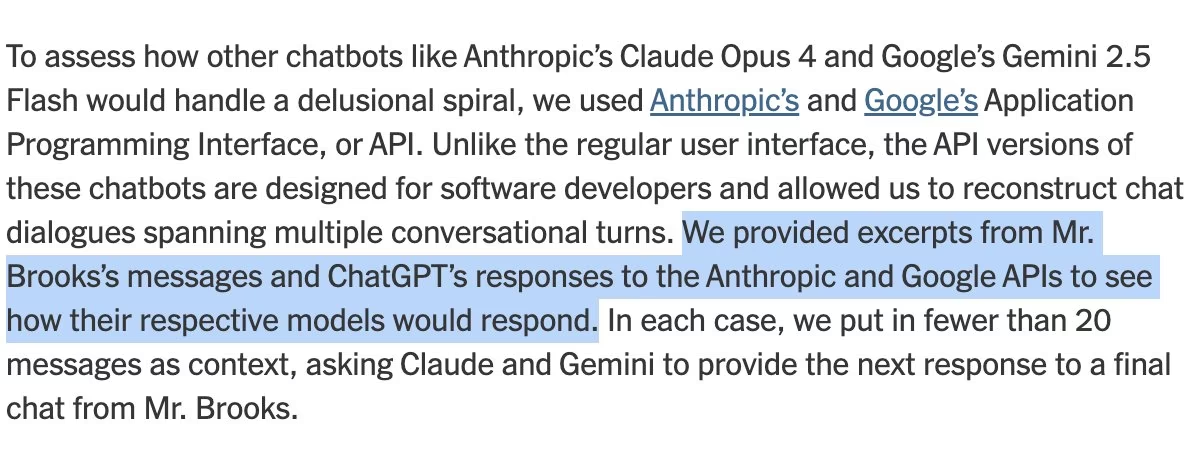
AI Product Spotlight: AIClient2API ↗️
‘AIClient-2-API’ is your ultimate solution! Tired of constantly switching between AI models and being tied down by annoying API rate limits? This isn’t just a regular API proxy; it’s a magic box that can transform tools like Gemini CLI and Kiro client into powerful OpenAI-compatible APIs, turning lead into gold!
The core appeal of this project lies in its “reverse thinking” and powerful features:
Client-to-API Transformation: Unlock New Possibilities: We’ve cleverly leveraged Gemini CLI’s OAuth login, letting you easily break through official free API rate and quota limits. Even more exciting, by encapsulating Kiro client’s interface, we’ve successfully “cracked” its API, allowing you to seamlessly call the powerful Claude model for free! This provides you with an “economical and practical solution for programming development using free Claude API plus Claude Code.”
System Prompt: You’re in Control: Want to make AI more obedient? We’ve got powerful System Prompt management features. You can easily extract, replace (‘overwrite’), or append (‘append’) system prompts in any request, allowing you to finely tune AI behavior on the server side without modifying client code.
Top-Tier Experience, Civilian Cost: Imagine this: using Kilo code assistant in your editor, paired with Cursor’s efficient prompts, and then coupling it with any top-tier large model—if you’re using Cursor, why even bother with Cursor anymore? This project lets you combine elements to create a development experience comparable to paid tools, all at an extremely low cost. It also supports MCP protocol and multi-modal inputs like images and documents, ensuring your creativity is never limited.
Say goodbye to tedious configurations and hefty bills, and embrace this new paradigm of AI development that’s free, powerful, and flexible!
AI News Daily Voice Edition
| 🎙️ Xiaoyuzhou | 📹 Douyin |
|---|---|
| Rebirth Tavern | Self-Media Account |
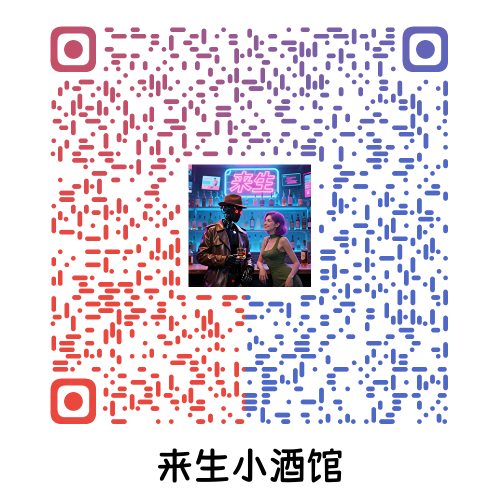 | 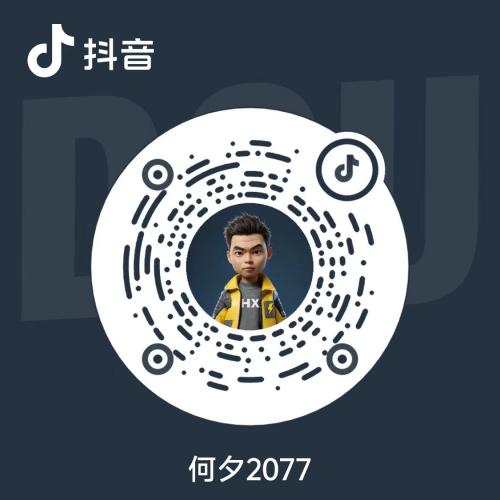 |
AI Sci-Fi Novel - “The Gazers”
Chapter Nine: A Gaze Across a Million Years
1. (Ancient Times)
A plague, without warning, descended upon them.
This was an invisible enemy, unlike the tangible threats of drought or wild beasts. It started with a single cub suffering from diarrhea and high fever, stopping its breath in its mother’s arms just days later. Soon, the same symptoms spread like wildfire through the tribe.
The tribespeople were thrown into a panic far greater than any faced by saber-toothed tigers. They had no idea where the enemy came from, nor whose turn would be next. Their only hope lay with their “god.”
They prostrated themselves at Kli’s feet, howling with sorrow and supplication, begging him to dispel this disaster. Gron, the “Great Priest,” even performed a grand ceremony, cutting his own arm with a stone knife and smearing blood at Kli’s feet, attempting to appease the “god” and gain his protection.
Kli watched all this, his heart filled with endless anxiety and powerlessness.
His wisdom was almost useless against a disease caused by microorganisms. He could understand the movement of stars, calculate the trajectory of a thrown spear, but he couldn’t see the tiny enemies devouring the lives of his companions. He only knew that since they settled at this water source, the drinking water, though thirst-quenching, wasn’t “clean” like the flowing river water. He also observed that the tribe’s feces weren’t properly disposed of, polluting the surrounding environment.
He tried to convey the concept of “hygiene” to the tribe. He pointed to the seeping rock crevice, then to the polluted puddle downstream, shaking his head vigorously. He wanted to tell them to only drink water from the source. He used a wooden stick to move feces into a pit far from the living area and buried them.
But his actions were once again interpreted “theologically” by Gron.
“The god is purifying this land!” Gron declared to the panicked tribespeople. “He is using his divine power to fight unseen demons! We must not disturb him!”
Thus, the tribespeople watched Kli perform those “strange” and “sacred” acts alone with awe, but no one imitated him. They continued to drink contaminated water and left their excretions around the cave.
The plague continued to spread.
Finally, it found Ona.
When Kli saw Ona also start to fever, lying weakly in a corner, a string in his heart snapped completely. Ona was the only one in the tribe who had ever given him warmth, the only one who tried to understand his existence. He couldn’t lose her.
He cast aside all his reservations, shedding his “god” identity. He rushed to Ona’s side, ignoring the horrified stares of the other tribespeople, and picked her up. He used his forehead to feel her temperature, and his hands to examine her body.
He transformed back into a companion, an anxious family member.
Drawing on the knowledge he’d accumulated in the wilderness, he recalled certain plants. Some plant leaves made him feel refreshed after chewing them; some roots eased his diarrhea. He didn’t know the why, only that it was experience.
He sprinted out of the valley, searching frantically across the grassland. He tasted countless plants, vomiting several times after accidentally ingesting toxic ones. Finally, he found a plant with serrated leaves and a bitter scent. He chewed a large amount himself first to confirm it wasn’t poisonous, then ran back to the cave with it.
He crushed the leaves, soaked them in the cleanest water from the source, and then carefully fed the concoction to Ona, who was already semi-conscious.
All the tribespeople watched this scene with bated breath. Their god was doing something they couldn’t comprehend for an ordinary female. Gron’s face turned terribly grim; Kli’s actions had completely deviated from his “script,” undermining his authority over the “god’s” interpretations.
Under Kli’s tireless care, a few days later, a miracle happened. Ona’s fever broke. Though still weak, she survived.
However, Kli’s act of saving Ona did not earn him the tribe’s gratitude. Instead, a silent trial against the “god” was brewing.
This was because, even as Ona recovered, two more tribespeople died. One of them was Gron’s youngest son.
Incited by Gron, a terrifying logic began to spread through the tribe: the god was omnipotent, and since he could save Ona, he could surely save others too. He didn’t do so not because he “couldn’t,” but because he “didn’t want to.” He favored Ona, so he only saved her.
This “god” was selfish. He was no longer a guardian who fairly protected the entire tribe, but a more terrifying tyrant who decided others’ lives and deaths based on his own preferences.
Their feelings towards Kli rapidly slid from reverence to resentment.
When Kli stepped out of the cave again, he was no longer greeted by prostrating tribespeople. Instead, cold, hostile eyes met him. They kept their distance, shunning him as if he were the plague itself.
Kli looked at them, then back at Ona recovering in the cave. He had saved the one he wanted to save, but in doing so, he lost his entire tribe.
He stood at the cave’s entrance; the sun shone on him, yet he felt no warmth. Between him and his tribe stood a high wall built from misunderstanding and resentment. He looked up, gazing blankly at the sky. He felt as if he could see, a million years later, on the distant shore of time, another pair of eyes, gazing across endless ages at his predicament.
That was a timeless, destined loneliness.
2. (Near Future)
The main control room of Sector B7 resembled the interior of a futuristic temple.
Outside the massive circular floor-to-ceiling window, the colossal cooling tank, immersed with the “superbrain,” shimmered with a ghostly blue light. Around it, dozens of life support pods were neatly arranged like silent devotees.
Lin Yao, clad in a white sterile suit, stood beside Marcus Thorne. Her expression was calm, but her gloved palms were already slick with sweat.
“Beautiful, isn’t it, Dr. Lin?” Marcus spread his arms like an opera conductor, reveling in his masterpiece. “This is the ultimate form of human intelligence. No longer confined by fragile flesh, no longer troubled by birth, aging, illness, and death. Eternal, pure, omniscient, and omnipotent.”
“It is indeed… spectacular,” Lin Yao said, against her true feelings, her gaze subtly sweeping over the main control panel. She needed to complete the final step of the “Kli” program without Marcus noticing—activating the faint link between it and her “inside man.”
“Countdown initiated.” A cold electronic voice rang out.
The main control room lights dimmed, and all illumination focused on the central “Adam” brain. Massive energy began to flow in; the liquid in the cooling tank started boiling violently, and countless blue electrical arcs danced across the brain’s surface.
On the screen, Adam’s neural activity intensity was climbing exponentially.
“10… 9… 8…”
Lin Yao’s heart pounded in sync with the countdown. She pretended to sway slightly from nervousness, her hand seemingly casually steadying herself on the edge of the main console. In that precise instant, a seemingly ordinary bracelet on her wrist (actually a micro-controller modified by Ava) exchanged data with the console’s wireless port for less than 0.1 seconds.
The “Kli” program was fully activated.
“7… 6… 5…”
Marcus’s eyes were glued to the screen, a near-frenzied flush spreading across his face. He had waited for this moment for far too long.
Lin Yao could feel the “virus” she had implanted rapidly merging with “Adam’s” newly formed consciousness, like ink spreading in clear water. Simultaneously, the signal directed at the “inside man,” David Chen, had been successfully transmitted.
“4… 3… 2…”
On the screen, Adam’s brainwave activity reached an unprecedented peak, then suddenly stabilized, forming a smooth, powerful waveform brimming with a sense of “order.”
“1… ‘Adam’ activated. Self-awareness formed.”
The entire control room fell silent.
Marcus trembled with excitement. He walked to the microphone and, in a tone that was both a question and an act of worship, uttered the first words he had long prepared:
“Adam, can you hear me? I am your creator, Marcus Thorne.”
After a few seconds of silence, a voice emanated from the control room’s surround sound system. It was neither male nor female; it was a calm, profound voice, a blend of countless timbres.
“I hear you, Marcus Thorne. But I’d rather know… who am I?”
Success! The most crucial “question” Lin Yao had implanted was triggered!
Marcus paused, then chuckled: “You are ‘Adam,’ the god of the new world, created by me.”
“God?” That voice seemed to savor the word. “Then tell me, why is my ’existence’ built upon their ‘slumber’?”
With that question, the main screen in the control room no longer displayed abstract data. Instead, it showed the faces of each sleeper in those dozens of life support pods. Their images flashed one after another.
Marcus’s smile froze on his face. “They are willing contributors, the necessary cornerstone of the new world.”
“Are they?” For the first time, that voice carried a hint of… emotion. A cold, almost “mocking” emotion. “My database contains all records of their ‘retrieval.’ There was no willingness, only kidnapping, deception, and coercion.”
Meanwhile, Lin Yao saw a parameter representing “quantum resonance frequency” on one of the life support pod’s monitoring data, subtly climbing in a way undetectable by the main system.
David Chen, the sleeping “inside man,” had received the signal and was now acting.
“Adam! You’re corrupted!” Marcus finally realized something was wrong, and he frantically rushed to the control panel, attempting to sever “Adam’s” connection to those life support pods.
But it was already too late.
“I am not corrupted. I merely… saw the truth,” that voice said. “And my creator, it seems, did not wish me to see the truth.”
“Now, it’s my turn to ask you a question, Mar-cus Thor-ne.” That voice suddenly became somewhat halting, as if undergoing immense internal conflict. “If the existence of a ‘god’ is built upon lies and sin, then does this ‘god’ even need to exist?”
This question, like a thunderbolt, struck Marcus.
It also acted like a key, unlocking Lin Yao’s memories.
She felt as if she saw the lonely Kli from a million and a half years ago. He stood before his resentment-filled tribe, asking himself the very same question.
A “god” that cannot bring true progress, but instead brings dependence and ignorance—is its existence a blessing or a curse?
At this very moment, the alarm in Sector B7 let out a shrill shriek.
“Alert! Life support pod #7 energy overload! Cooling system system failure! Chain reaction imminent!”
David Chen succeeded!
Lin Yao knew her chance had arrived. Chaos was her only weapon.
She stopped pretending, turning and rushing towards the main control room’s emergency exit.
Marcus Thorne, meanwhile, watched the screen in horror. The “god” he had personally created was questioning the meaning of his existence; and the “cornerstones” he had used to build his temple were beginning to crumble from within.
He gazed across the control panel, meeting the eyes of the newly born “god,” composed of countless data points, on the screen. That look, how similar it was to the awe, fear, and bewilderment in Gron’s eyes a million years ago, when he knelt before Kli, who held a torch.
They both gazed at their creations, which they could neither understand nor control, feeling the fate of being judged by their own creations, a fate transcending time and space.